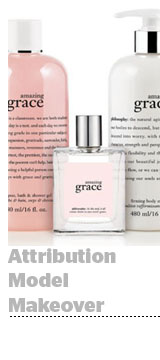
About a year and a half ago, global beauty manufacturer Coty realized it needed to get a grip on its own data.
The company was about to complete a merger with several P&G specialty beauty brands and become a $9 billion global business.
And since Coty was expanding its portfolio, pressure was mounting because each brand had its own unique marketing requirement.
For instance, big-box brands such as Clairol and CoverGirl work with suppliers, retailers and consumers differently than Wella, Coty’s B2B brand, or the Marc Jacobs and philosophy specialty labels.
“When you’re in consumer beauty and fighting for shelf space at Walmart and Target, you’re competing very differently than if you’re fighting for shelf space at Sephora,” said Kristina Kaganer, director of global data strategy for Coty, speaking Thursday at the Attribution Accelerator event in New York.
Coty also lacked proper insight into its own data, which exacerbated the challenge of marketing multiple brands in disparate markets; the US, UK and Germany represent Coty’s biggest revenue streams, but sales are growing in Brazil and China.
“The reality of sitting on a global team where you might have 20 agencies is that every single one of them owned a different piece of data,” Kaganer said.
If the agency owns the contract, they also own the data.
“And each had a slightly different naming convention [to report or classify data], so even if I got the data back, it was hard to do anything with it,” Kaganer added.
So Coty took more ownership of its tech, data and media strategy.
First, Coty prioritized its global media relationships and pared down to “bigger, better and fewer” partnerships.
“We were in this place where the media world was getting more and more fragmented, and we needed to start validating,” Kaganer said. “Is the reach we’re promised the reach we get?”
Kaganer’s team in marketing sciences managed the data component by identifying global vendors, including an ad server and multitouch attribution solution, which could support campaigns across multiple geographies and supply the detailed, log-level data it demanded.
Coty implemented one central campaign management and reporting tool across its global media teams, which trickled down to the individual agencies across brands, to standardize access to global campaign data within a repository that Coty owned and operated.
“Our goal was to show this macro view where you could see everything, such as how our publisher investments were trending,” Kaganer said. “If we made a big bet with a walled garden last year, maybe we’d focus on a diversification strategy the next year.”
Coty also doubled down on data quality.
“People joked that we were the ad-server police, but we created macro-level guidelines so our agencies knew what they should and should not be doing,” Kaganer said.
Once a month, Coty runs an audit to find common campaign mistakes and puts agency and brand repeat offenders through mandatory training.
Its tech vendors are put through the same kind of rigor.
Coty recently queried data management platforms about their data collection approaches with the EU’s General Data Protection Regulation looming.
“We asked, “How will this impact data collection?’” Kaganer said. “Some companies weren’t entirely sure which of their products will work as a result, while others have been preparing for a while. But the onus will also be on the publishers.”
This post was syndicated from Ad Exchanger.

More Stories
Thursday, Feb. 20 Evening Cable News Ratings: The Five Is 1st in Total Viewers
Meta and X Approve AI Ads Referencing Nazi War Crimes Ahead of German Elections, Research Finds
X Rolls Out AI-Generated Ads in Push to Win Advertisers Back